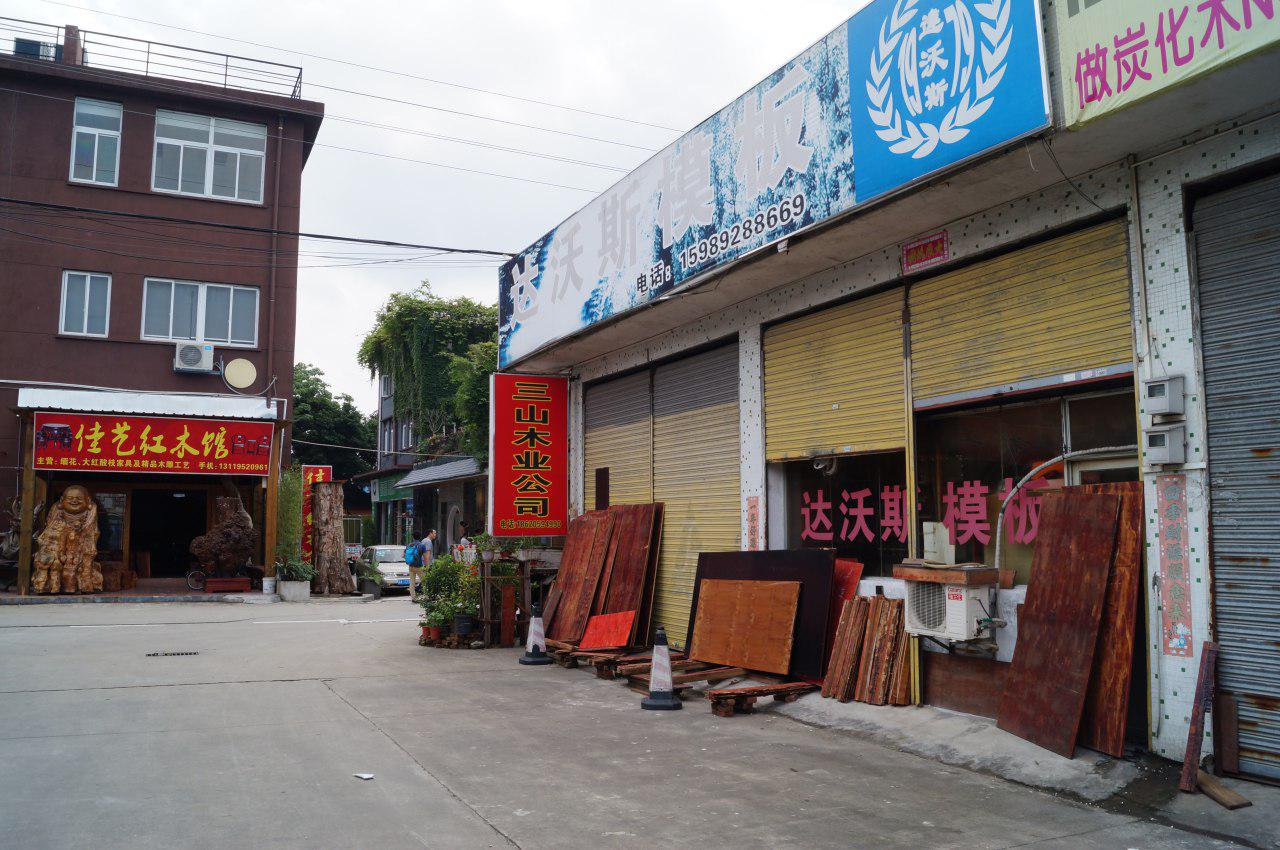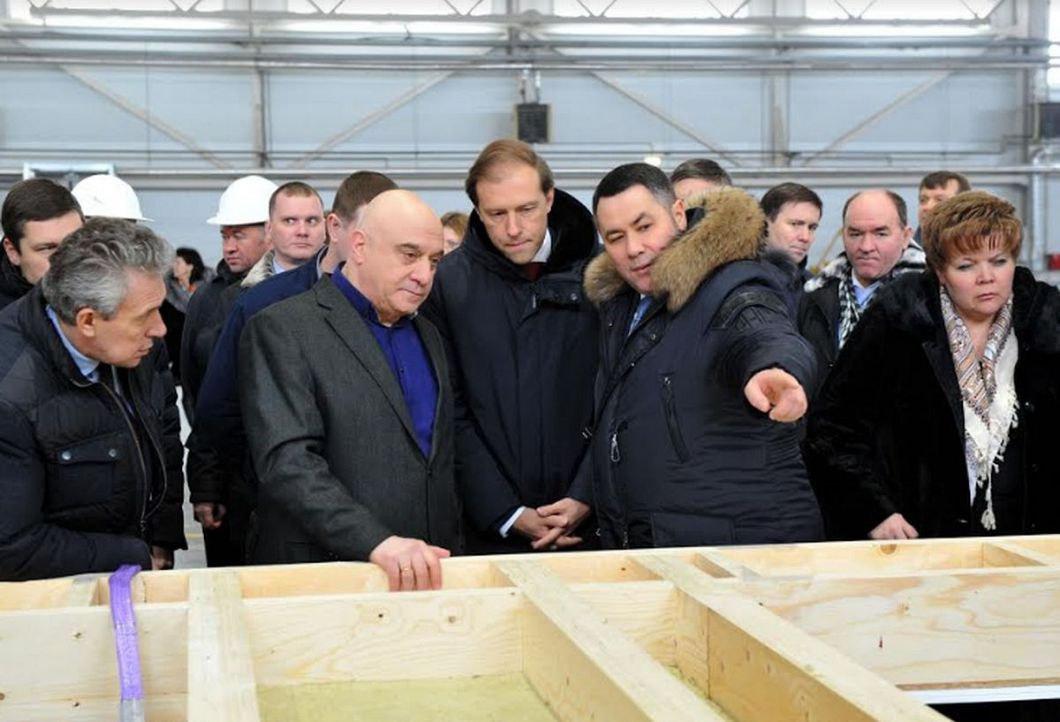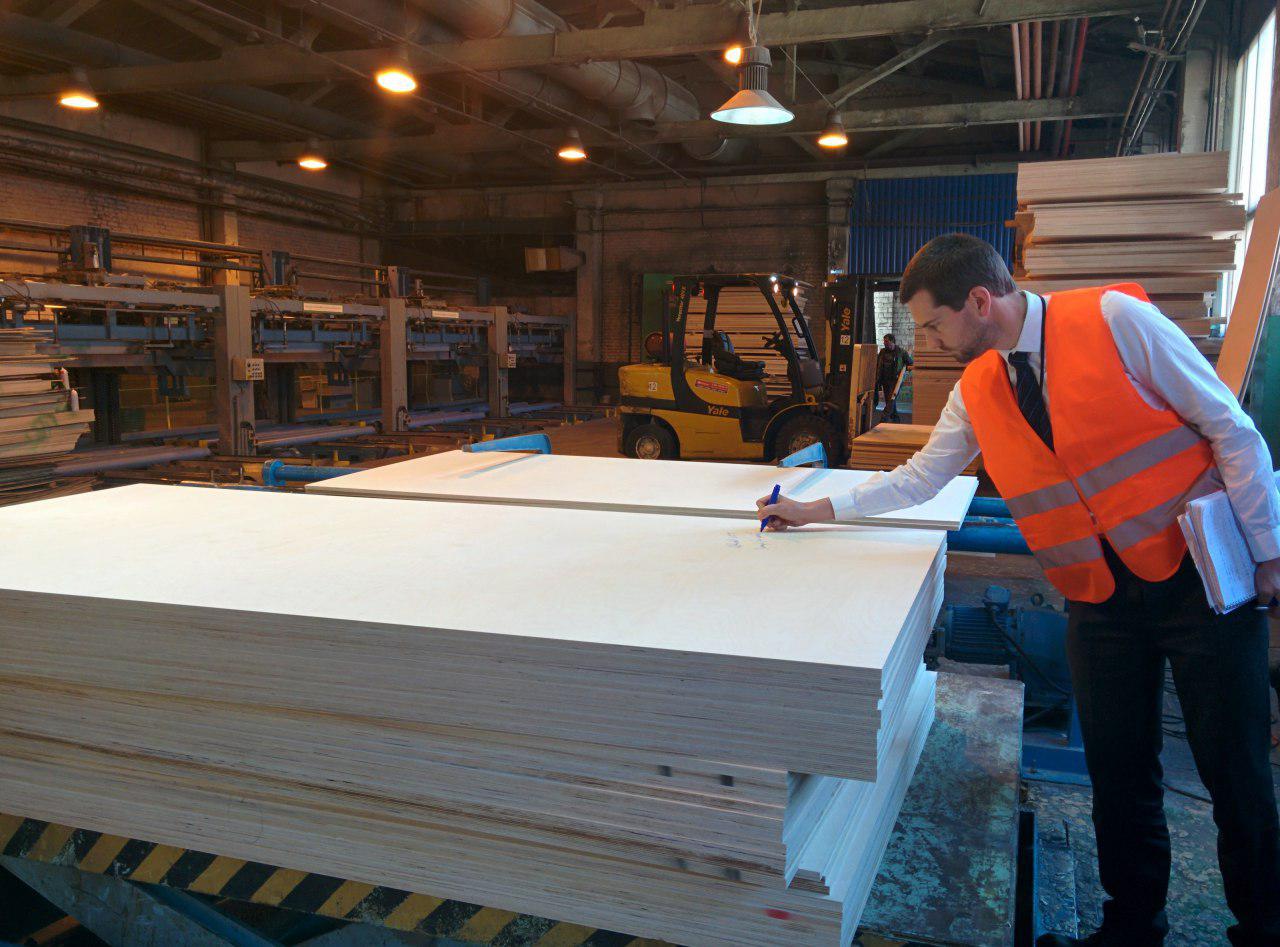40 facts on the plywood & panel industry in Russia
The market of OSB, MDF/HDF, particleboard and plywood in Russia has changed significantly in recent years. Companies are finding new niches in Russia and abroad, master the production of new, specialized products like transport industry plywood or thin panels for laminated floors. Under conditions of low activity in construction and furniture production, panel mills have passed the stage of import substitution and are gradually becoming exporters.
WhatWood publishes 40 facts about the industry of plywood and wood panels in Russia – a snapshot representing the state of the industry as of early 2017. These and many other facts and figures are disclosed in detail in agency’s industry reports:
1. The average return on sales of new MDF lines is about 20%.
2. The access to export markets for producers of wood panels is limited by high logistic costs and, respectively, by delivery distance, although Russian manufacturers were looking for opportunities to develop exports in recent years. For the westernmost regions of Russia, a promising market is the Baltic States and Eastern Europe: here, the consumption is growing faster than in Western Europe and distance delivery allows to recoup the cost of logistics. For MDF manufacturers, also of interest are Iran and the so called “second-tier” Chinese cities.
3. 2017 could be a turning point for the market of OSB: this product will follow the MDF, chipboard and flooring and will become an export item. According to market players, Talion Arbor mill, which opened in the autumn of 2016, already exports about 50% of its volume. Export shipments are made by both Kronospan-Egoryevsk and DOK Kalevala: to the CIS countries, UK, Sweden, and China.
4. The prices of raw materials for panel production were increasing steadily throughout 2016. This, in turn, has led to increased shipping costs and changing logistics: for example, IKEA Industry Novgorod delivered logs for the production of particleboard by rail. Egger company plans to build own railway line to its plant in Gagarin, which produces MDF and chipboard, as the closure of roads during the spring thaw leads to additional costs.
5. The volume of consumption of wood panels in Russia in 2016 amounted to 10.8 million m3 (-5% yoy), with an increasing proportion of MDF/HDF and OSB.
6. In Russia, 70% of chipboard is used in furniture production, while in the MDF segment the share of furniture is even higher.
7. The reduction of the key rate of the Central Bank led to a decrease in mortgage rates of Russian banks. This revitalized the primary real estate market (borrowing almost returned to pre-crisis levels) and ultimately proved to be an efficient tool of state support.
8. The Ministry of Industry and Trade is developing measures to stimulate wooden housing: changes into design standards and building regulations are already on the way. Among the most important changes that the ministry is promoting are the use of new wood materials, construction of wooden buildings up to three stories and green energy standards.
9. In 2016, construction output rose 1.6% in the Euro area (19 members of the EU) and by 1.3% in the EU as a whole. Commercial construction was more dynamic than housing construction. Also the consumption of furniture and flooring is restoring in Europe. The consumption of parquet grew by 2% after rising 0.5% in 2015. In 2016, the members of the EPLF association produced 476 million m2 of laminated flooring (+5.6% yoy), and the Eastern European market was more dynamic than the West one, with Russia being ahead of both regions: the country showed almost a 17% increase in the sales of laminate flooring.
10. Woodworking industry in Germany increased its sales by 2.4% to €35 billion in 2016. The construction segment showed a 8% growth. It is followed by wooden packaging (+5.1%), flooring (+4.2%) and furniture production (+3.2%).
11. The Chinese middle class is willing to buy imported laminate. The market share of imported products in one of the largest cities in China, Guangzhou, is now less than 20%, but in the next five years it could rise to 50%. The Chinese flooring market has gradually shifted from the largest cities, where demand is saturated, to medium-sized metropolitan areas, the so-called “second-tier” cities.
Fulin timber market in Guangzhou, China. Photo: Kirill Baranov, WhatWood.
12. Reduction in orders from furniture manufacturers will lead the companies to open new niches. Segezha Group started the production of moisture-resistant 38-mm thick chipboard at its Karelia DSP mill in the third quarter of 2014, while in 2015 released a trial batch of grooved particleboard for the construction market, which is a new product for Russia, but a well-known one in the world market.
13. In the near term, the market is likely to compete harder with the Belarusian producers of particleboard, MDF, OSB and furniture: a united Customs space, contracts striken in Russian roubles and proximity to the most populated and wealthy regions of the Russian Federation give significant competitive advantages to Belarus enterprises. Also, the brand of Russian furniture manufacturers is weaker than Belarusian.
14. The installed MDF/HDF capacities in Russia amount to 3.9 million m3/year, its production load is about 60%. Operating and planned production facilities in Russia will be enough to cover the growing demand, with the full import substitution.
15. Under the stagnating furniture industry, one growth point for the industry may lie in the production of thin MDF/HDF for laminate flooring. The market of laminate in the Russian Federation is now estimated at 83 million m2.
16. In Russia, there are four companies that do not have their own MDF/HDF capacities, but produce laminate flooring. They, on the one hand, are consumers of MDF/HDF factories, but to a greater extent they are competitors, as MDF/HDF producers are gradually transferring to own production of laminate floorings. Together, these four companies own 22% of the Russia’s laminate capacities.
17. The consumption of wet-process fibreboard (also called hardboard; as a rule, these are Soviet-era satellite lines at the pulpmills) is gradually reducing, and companies are closing these capacities as obsolete and ineffective. A few years ago, Arkhangelsk pulp and paper mill ceased fibreboard production. A line at Novoeniseysky complex was idle in 2016. Ilim Timber holding ceased production of hardboard at Ilim Bratsk DOK mill due to unprofitability, but at the end of 2016 rented the line to one of its customers.
18. The Asian market of wood panels uses formats that differ from the Russian and European ones. The average line capacity is smaller, while most of the demand falls within low-quality products. In China, there is overproduction of panels, and the launch of new capacities has considerably reduced recently. The Celestial Empire itself is massively exporting this product. However, some demand is appearing for quality products, and from the point of view of logistics and competitive environment, the supply of Russian panels to some regions of China is becoming more economically viable and in-demand.
19. The main segment of MDF consumption in Iran is furniture and laminate flooring, with almost all consumption falling within laminated products. Manufacturers of floor coverings, as a rule, import polished plates in order to laminate it at its facilities. The rated capacities of new large mills are less than in Russia: around 60-120 thousand m3. The imports of MDF into Iran is about 800,000 m3, and the country is second largest importer of this product in the world after the United States.
20. Competition in the MDF market has increased markedly in 2016: new lines continue to open, and the furniture market is still stagnating. Manufacturers were competing for customers and cutting prices to gain orders throughout the whole 2016.
21. Launch of Russian and Belarusian capacities together with the low rouble rate made OSB imports incompetitive. Imports from far-abroad countries fell almost five times to 107,000 m3 in 2015 and further to 48,000 m3 in 2016. Egger panels almost disappeared from the middle-price niche, while Canadian products went off the economy segment. Trade flows were also rebuilt by Kronospan holding: instead of importing from Latvia and Romania, the company mainly supplied Russia with OSB made at the Moscow region’s Yegorievsk and Belarusian Mogilev mills. In 2016, Kronospan Mogilev continued expansion of the Russian market: out of the total volume of 645,000 m3 sales to Russia has grown to 380,000 m3.
22. OSB can partially displace plywood in the low-price segment of the Russian market. Wholesale buyers are now ready to switch from plywood to OSB in a number of segments, but sales of large mills are planned at favourable prices in advance. However, OSB is still a new product for the market, and its recognition will be rising gradually. Competition in the sector is still high.
23. Talion Arbor mill (operated by STOD LLC company) started production of OSB in the autumn of 2016 at its site in Torzhok (Tver region). The company already produces glulam LVL at this site and sets as strategic goal the supply of house kits made of LVL and OSB to the market. STOD also regards I-beam production using LVL and OSB as a promising idea.
Opening of Talion Arbor mill.
24. The average return on sales for Russian plywood mills in 2016 was 16%, with sales revenue growing 19% on-year to RUB 115 billion.
25. Major consumer markets of square plywood are USA and Egypt (a number of Russian companies is competing there), of large-format laminated plywood – Germany, Turkey, and the Middle East (with a leading supplier – and in several countries the only one – being Sveza Group).
26. The production of softwood plywood in Russia does not exceed 200,000 m3, the exports – about 130,000 m3 (as of 2016), of which 119,000 m3 account for Ilim Bratsk DOK (Irkutsk region).
27. The total capacity for the production of plywood in Russia now amounts to 4.1 million m3. In five years, with the expansion of existing and construction of new plants, this volume could rise up to 5.7 million m3.
28. An important issue for the plywood factories is that the quality of plylogs is becoming poorer. The year 2016 was also marked by a significant growth of prices for plylogs. The main reason behind this were the growing railway tariffs.
29. Plywood imports to the UK at the end of 2016 rose 0.9% to 1.47 million m3, including +3.7% to 1.02 million m3 in the segment of hardwood ply. China’s share in the supply of hardwood products to Britain fell from 59% to 55%. Other countries increased their deliveries: Indonesia by 32%, Russia by 28%, and Malaysia by 16%. The main suppliers of plywood from Russia to the UK are Sveza and Syktyvkar plywood mill.
30. In the basic segments of plywood consumption in Europe, the key specs are 18 mm (4×8 and 5×10) and laminated varieties.
31. One of the interesting specialized segments of the consumption of laminated plywood is the transport industry. Sveza Novator mill widened the range of products in 2016 with SVEZA Color and SVEZA Paint grades. Working with individual orders helped the mill increase sales by 3%. These specs are popular in the transport industry of Germany, where colored laminated plywood is used in the production of vehicles. Laminated Sveza plywood is used to produce transport flooring for Schmitz Cargobull and a German tuning company that makes casing for Mercedes Sprinter and Volkswagen Crafter. Another holding company, Segezha Group, also plans to increase the share of the transport industry in its birch plywood sales to 10% in 2017. Among the existing and potential customers of the group in Europe are Schmitz Cargobull (Germany), Fliegl Farhzeugebau (Germany), EN SAS (France), Renault (France) and Van HOOL B.V. (Netherlands).
32. Sveza Group has delivered birch plywood for the construction of two LNG tankers in South Korea and is negotiating new orders. For the development of a new segment, products of the St. Petersburg factory Sveza Ust-Izhora have been certified. Segezha Group also intends to deliver plywood for LNG carriers.
GTT auditor signs samples of Sveza Gas plywood for qualifying tests. Photo: Sveza Group.
33. Egypt is markedly different from other countries in the MENA region in terms of plywood consumption. This is a mono-market which consumes exclusively square plywood. Russia’s share in the Egyptian market is over 50%, the remaining volume in this country is supplied by China, Malaysia etc. There are plenty of suppliers, including from Russia, and the leader of the Russian market Sveza Group does not have a leading share in Egypt (unlike in Germany, Turkey or other MENA countries).
34. Other countries in the MENA region (Saudi Arabia, UAE, Oman, Lebanon, Kuwait, Qatar, Iraq, Bahrain) almost exclusively consume laminated plywood, and the leading product is 2440 х 1220 х 18 mm, although specifications are more variable here.
35. The supply of Chinese plywood in the United States in 2016 amounted to 1.83 million m3 (+2%). China’s share in imports of hardwood plywood in the States rose from 55% to 58%. Supply from Indonesia has fallen by 35% to 322,000 m3, and Russia have surged to second place following the year’s results.
36. In Turkey, the decline in demand in the market amid the collapse in the Turkish lira and the general instability in the country led to reduced deliveries and lower prices. The key specification in this market is laminated 2500 х 1250 х 18 mm, which is supplied by Sveza and Syktyvkar plywood mill.
37. The plywood market in Russia and CIS countries is not very mature yet, and it will grow in the direction of specialized and large-format products in various segments and niches.
38. Recognition of Russian plywood on the global market is growing: in particular, activities of Sveza Group helped settle birch plywood in the Middle East within several years.
39. Current competitive environment in the market of plywood is not determined by the balance of supply and demand or by international prices, but rather by the actions of the trading companies that have formed a speculative market and actually determine the situation on it: 90% of trade takes place through intermediaries. However, the plywood industry is consolidating and making the first steps to establish an industry association to take over the market control.
40. According to estimates of market players, export prices for low-grade plywood in the winter of 2016-2017 were declining rapidly, while in the middle and premium segments the situation was at least stable.
In WhatWood studies you will be able to get detailed answers about the industry of plywood and wood-based panels in Russia:
– What is the competitive environment in the industry?
– How will capacity increase in the medium term?
– Where are the promising segments of consumption?
– What are the current market prices?
– What will happen to prices and demand?
Contact us:
+7 905 704 5133
 Timber industry research & analytics
Timber industry research & analytics 


